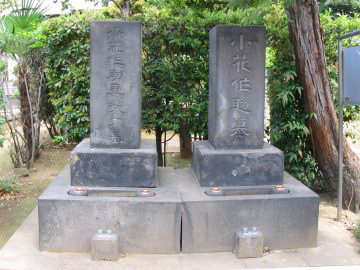
01. Tomb of Obana Sakunosuke
Metropolitan Historical Site
Yanaka cemetery park, 7 chome, Yanaka
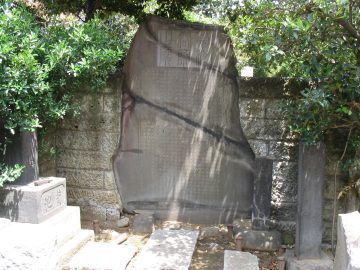
02. Tomb of Kikuchi Yousai
Metropolitan Historical Site
Yanaka cemetery park, 7 chome, Yanaka
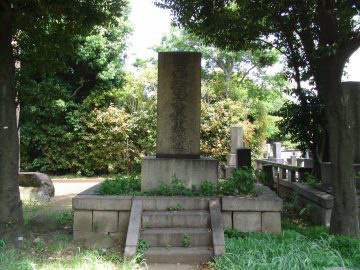
03. Tomb of Ohara Shigetomi
Metropolitan Historical Site
Yanaka cemetery park, 7 chome, Yanaka
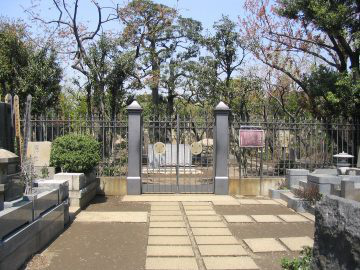
04. Tomb of Tokugawa Yoshinobu
Metropolitan Historical Site
Yanaka cemetery park, 7 chome, Yanaka
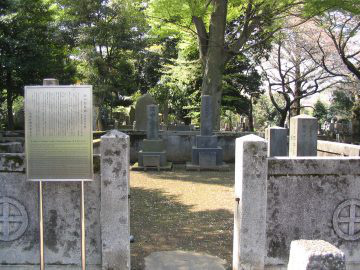
05. Tomb of Tanaka Yoshio
Taito City Historical Site
Yanaka cemetery park, 7 chome, Yanaka
Tanaka Yoshio was a naturalist government official from the end of the Edo Period to the Meiji Period. He was born in Iida City, Nagano Prefecture in 1838.
In 1857, he became a student of Ito Keisuke, and here he learned about Western medicine, Dutch and natural history. In 1861, together with Ito, Tanaka set out for Edo to work in the Institute for Western Learning's "Bansho Shirabesho" of the Tokugawa shogunate. In 1867, he participated in the Paris Inter-national Exhibition, and modeled Japans natural history museums after the Jardin des Plantes (National Museum of Natural History).
In 1870, Tanaka worked at the Bussan-kyoku (Domestic Products Research Center) together with Machida Hisanari, who would later become the first Director of Ueno Museums. He helped create the foundations for the Tokyo National Museum, the National Science Museum, and the Ueno Zoological Gardens. In 1871, the "Daigaku-nanko bussan-e," which was sponsored by the Bussan-kyoku and held at Shokon-sha (Yasukuni Shrine), was an epoch-breaking event. Also, in 1873 and 1876, he was sent as a representative of the government to the International Exhibitions in Vienna and Philadelphia.
After the Ueno Museums opened, Tanaka placed heavy emphasis on exhibitions, and contributed in promoting the industries by establishing things like Japans first industries museum, Jinguu-nougyo-kan, etc.
He was granted the title of baron in 1915, and on June 22, 1916, at the age of 77, he passed away. On the front of his tombstone is engraved, "Junii (Second officer of the Second Court Rank) Kun-itto (First Order of Merit) Baron Tanaka Yoshio Tomb," and on the reverse side is engraved a brief personal history.
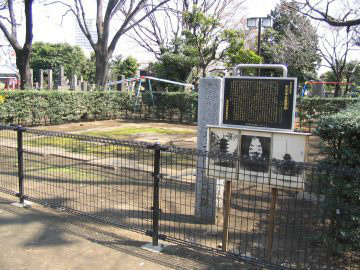
06. The Remains of Ten-noji Five-storied Pagoda
Metropolitan Historical Site
Yanaka cemetery park, 7 chome, Yanaka
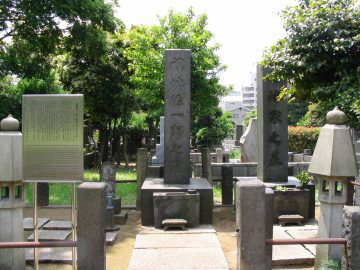
07. Tomb of Fukuchi Genichiro (Ochi)
Taito City Historical Site
Yanaka cemetery park, 7 chome, Yanaka
Fukuchi Genichiro was born in Nagasaki in 1841, and he was called Ochi. He worked as editor-in-chief for the Tokyo Nichinichi Shinbun (predecessor to the Mainichi Shinbun), doing things like of the first editorials. He contributed greatly to Meiji Period journalism, and after he left the newspaper industry, he worked as a literary person.
Genichiro settled within the city, in such places as Nicho-machi, Asakusa Umamichi, and Shitaya Kaya-cho. He lived in Kaya-cho during his golden time when for one to showcase their abilities. Politically, he published the Shukenzaikunron in the newspaper and formed the Rikken Teisei-to (political party), and economically, he was involved in the maintenance of Asakusa Park.
On the literary side, Genichiro organized the Kabuki-za with Ichikawa Danjuro, Kawatake Mokuami, and others. As well as concerning himself with ways of bettering stage play, he wrote the history books, "Bakufu Suibouron," "Bakumatsu Seijika," and others. Even today, he is still highly regarded. On January 4, 1906, passed away at the age of 66. On the front of the tomb, "Fukuchi Genichiro Tomb," on the side, his and his wife, Satoko's, posthumous Buddhist names are engraved.
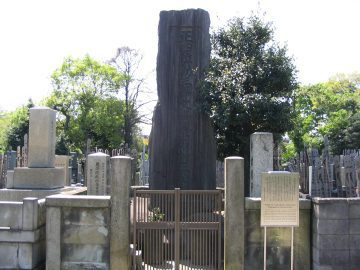
08. Tomb of Nakamura Masanao
Metropolitan Historical Site
Ryogon-ji Temple, 7 chome 7, Yanaka
Nakamura Masanao was a Meiji Period educator and enlightenment scholar, born in 1832 in Edo. In 1866, he accompanied Japanese students to England as a chaperone and experienced the civil society of England.
In 1872 he was employed as an interpreter by the Meiji Government. The next year established Dojin-sha and made efforts to educate women and handicapped people. He worked as a professor at the Tokyo Imperial University, as a member of the senate, and as a member of the Upper House. He died at the age of 60 on the 7th of June in the 24th year the Meiji Period.
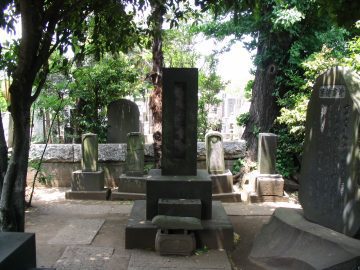
09. Tomb of Shionoya Toin
Metropolitan Historic Site
Ten-noji Temple cemetery, 7 chome 16, Yanaka
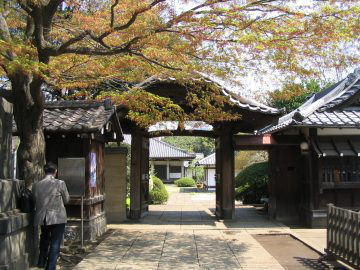
10. Gokokusan Tenno-ji Temple
Ten-noji , 7 chome 14-8, Yanaka
When the Buddhist saint Nichiren stayed at the house of Seki Nagateru, the lord of this area, he carved a sculpture of himself and Nagateru built a hermitage in which he enshrined the sculpture. This was the origin of Tenno-ji Temple, which is generally said to have been established in the Muromachi Period between 1394 and 1427. Among the temples still extant in Tokyo there are few which were founded before the Edo Period (1600-1868), so Ten-noji is one of the few ancient temples left in the metropolis.
Tenno-ji was originally called Kanno-ji, but in 1833 in accordance with decree by the Tokugawa Government, its name was changed and its sect altered from the Nichiren sect of Buddhism to the Tendai sect.
During the Edo Period public lotteries were held here, so along with Ryusen-ji Temple in Megruro and Yushima Tenjin Shrine in Ueno it was famous as one of the "Three Lotteries".
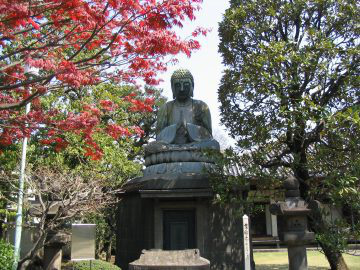
11. Copper Seating Figure of Buddha
Taito City Historic Site
Ten-noji , 7 chome 14-8, Yanaka
This figure was created in 1690 by Ota Kyuemon, who lived in Kanda Nabe-Cho.
The inscription on the base of the figure tells that it was first set up to the right of the old main temple. This would now be about in the center of the present west side road to the north of the remains of the five-storied pagoda of Tenno-ji Temple. In 1874. the figure was moved to the western corner to open Yanaka cemetery. In June of 1933 it was repaired, moved to the present site and placed on a newly built ferroconcrete base. In 1938 the charnel house was built in the base.
In the Edo and Meiji Periods the figure was repeatedly reopened in various documents and books and has been very popular among people as "Tenno-ji Daibutsu."
It was registered as a tangible cultural asset in 1993 in the Book of Cultural Assets of Taito City.

















